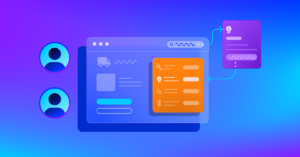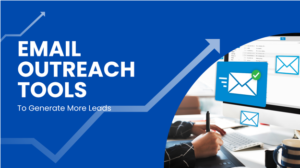
The demands placed on businesses by customers have increased significantly in recent years.
Customers now want businesses to answer their beck and call 24/7, but they don’t want to talk to them directly. They expect companies to be aware of their challenges and needs, but may not be willing or able to share them openly. Customers also highly value personalized service — but not at the cost of their privacy.
So how can you reconcile all of these seemingly contradictory expectations?
The answer is customer engagement platforms.
A customer engagement platform is a tool that helps you to manage customer interactions and communications across multiple channels. This can include everything from social media to live chat to email. By using a customer engagement platform, businesses can get a 360-degree view of the customer, which helps to provide more personalized and relevant service.
So if you’re not already using a customer engagement platform, now is the time to start. Here’s everything you need to know about them.
What are customer engagement platforms?
Most brands today use different apps for engaging and interacting with customers, with each collecting unique data sets. Unfortunately, this often leads to poor experiences where customers get treated very differently depending on how they contact a company. A customer engagement platform (CEP) helps to solve this problem by consolidating all of these different applications and data sets into one easy-to-use system.
A CEP’s primary purpose is to capture customer interactions with the company and deliver a cohesive experience for customers. You can think of it as the “brain” for customer engagement where all the data collected from various touchpoints is centralized and analyzed. Using this data, you can provide your customers with a more integrated and personalized experience.
There are many different features that customer engagement platforms offer, but some of the most popular ones include:
- Third-party integrations. Of course, a CEP is only as good as the data you put into it. Because of this, CEPs have built-in integrations for popular CRMs, e-commerce platforms, and other business applications.
- Omnichannel support. A CEP will allow you to manage all of your customer interactions in one place, regardless of the channels they use (e.g., phone, email, trackable QR codes, social media).
- Segmentation. Segmenting your customer base is essential for delivering a personalized experience. CEPs make it easy to segment customers based on data such as demographics, location, purchase history, and more. And this segmentation, in turn, will directly influence and optimize your conversion rate.
- Live engagement. Live engagement features allow you to connect with customers in real time, whether it’s through live chat apps, voice, or video. This can be a great way to get back to customers right away if they have any questions or concerns.
- Analytics. Collecting data is worthwhile only if you can actually make sense of it. CEPs come with powerful analytics tools that help you understand your customers better and make informed decisions about your engagement strategies.
- Automation. Most CEPs can automate many routines or repetitive tasks involved in customer engagement, such as sending follow-up emails or responding to common questions. The result is a more efficient engagement process and happier customers.
Benefits of using customer engagement platforms
Good customer engagement platforms offer a wide range of benefits that can help businesses of all sizes. Here are some of the most noteworthy ones:
Hyper-personalization
CEPs pull together first-hand engagement data to create real-time customer profiles that provide rich and up-to-date info about your customers. By having this data at your fingertips, you can engage with them on their topics of interest via their preferred channel of communication.
Gain a competitive advantage
A customer engagement platform can help you create a specialized customer experience that will make your company stand out from the rest. Almost all business owners will say that customer experience is a key differentiator, but few are actually able to deliver on that promise.
CEPs can help you turn that promise into reality by enabling you to track, manage and answer all customer queries in one place. That way, you can quickly resolve issues and deliver a seamless customer experience.
Improve customer satisfaction
Last but not least, customer engagement platforms can help you improve customer satisfaction. Delivering personalized and timely engagement via CEPs will show your customers that you care about them and take pride in providing them with a great experience. This, in turn, will lead to improved customer satisfaction and loyalty.
Are customer community platforms also customer engagement platforms?
Today, the rise of the customer community platform is a direct result of the way customers want to engage with companies. They want to be able to find answers to their questions, get help when they need it, and share their experiences with others.
A customer community platform provides a place for customers to do all of those things. It’s like a help desk, CRM, and communication platform all rolled into one.
That’s why more and more companies are using customer community platforms as a way to engage with their customers. Here are a few reasons why you should too:
To collect customer feedback
The very nature of online communities is to promote candid conversations and collect feedback. This open exchange of ideas and feedback is key to understanding what your customers want and need. Additionally, being able to directly connect with your product team encourages customers to share their thoughts and insights.
To educate new customers
Creating practical guides and best practices for product usage is a great way to educate customers and help them get the most out of your product.To raise awareness for your brand or products, influencer marketing platforms can come to your aid, making it easier for you to reach your target audience. Aside from that, A customer community platform is the perfect place to host this type of content so customers can easily find it and refer back to it when needed.
To provide a robust onboarding experience
Inviting new customers into a community platform gives them a way to get involved with your product from the very beginning. They can explore on their own, ask questions, and get answers from both you and other customers. This type of environment accelerates the onboarding process and sets customers up for success with your product.
How do you choose a customer engagement platform?
Customer engagement platforms are becoming an increasingly popular way to connect with customers and manage customer relationships. But with so many options on the market, it is sometimes impossible to determine which will work best for your business.
Here are a few things you can use to narrow down your options and choose the right customer engagement platform for your business:
Customer needs
The whole point of customer engagement is to support your customers’ needs. So, you must ensure the platform you choose is equipped to handle those needs. Consider the range of channels your customers use to engage with you. Then, find a platform that plays well with all of them.
Integration possibilities
Another important consideration is whether or not the platform can integrate with your other systems. The best customer engagement platform for you can integrate easily with your existing tools and platforms, allowing you to create a seamless customer experience.
Resource constraints
You need to be realistic about the resources you have available. If you’re a small business, you might not have the same budget, time, or manpower to invest in a customer engagement platform as a larger company. Use your resources wisely and don’t overstretch yourself when choosing a customer engagement platform.
Future-proofing
Finally, when it comes to considering any ecommerce marketing tool, you need to think about the future. As your business grows, your customer engagement needs will change. Make sure the platform you choose is flexible and can accommodate future growth.
Now that you know what to look for, let’s take a look at some of the best options on the market. Here are our top picks:
Zendesk
The folks at Zendesk understand that providing excellent customer support is only part of the equation when it comes to keeping your customers engaged and happy. That’s why they’ve developed a suite of tools to help businesses streamline their customer support operations while also integrating with other key customer engagement platforms. By doing so, businesses can rely on a single source of truth for customer information, which leads to more engaged and satisfied customers.
Notable features:
- Zendesk provides a business with a complete and overarching view of all its customers by bringing data together from all the disparate systems where customer conversations are happening. This helps businesses avoid silos and provide a coordinated, consistent, and delightful experience to every customer, at every touchpoint.
- The platform has plenty of automation features to make things easier on your team, speed up resolutions for customers, and improve your agent productivity. No matter where you are in your support journey, this tool can help you streamline your process and deliver the best possible experience to your customers.
- Zendesk also has its own chatbot that you can deploy to answer common questions and help deflect tickets. The chatbot can also be used to engage customers in new conversations and get feedback on your products or services.
Pricing:
Zendesk offers a free trial but its pricing tier starts at $19 per user/ month for the sales platform and $49 per agent/month for the service platform. It also offers a custom enterprise plan for businesses with more specific needs.
Qualtrics XM
If you want to get the most out of your feedback and turn it into actionable items, then Qualtrics XM is the tool for you. It combines world-class listening technology with automated workflows to ensure that every level of your organization can take advantage of what people are saying.
Notable features:
- Qualtrics XM allows you to collect data from every customer interaction, so you can understand which interactions are driving engagement and which ones are hurting it.
- The tool gathers data from many different sources, including apps, websites, video and voice calls, direct messages, social media, customer satisfaction surveys, and IoT devices. This allows you to get a complete picture of customer sentiment.
- The tool will give you real-time insights into customer satisfaction levels. With insights into how customers feel at every stage of their journey, from first-time buyers to repeat customers, you’ll know what matters most to them and how to best keep them engaged.
- As your business grows, it becomes more difficult to keep track of all your customer support tickets. Qualtrics XM offers a solution by automatically categorizing messages and routing them to the right contact center agents. That way, you can be sure that each customer’s concern is handled in a timely and efficient manner.
Pricing:
Qualtrics XM hasn’t released its pricing publicly, but you can request a quote by contacting the company directly.
Salesforce 360
Salesforce 360 is the perfect solution for teams who want to work together more efficiently and deliver personalized experiences to customers. With Salesforce as your partner, you’ll have everything you need to deliver world-class customer engagement.
Notable features:
- Salesforce’s 360 Einstein AI feature provides recommendations for your sales and customer service campaigns based on a customer’s individual traits and past interactions with your business. This allows you to anticipate their needs and better serve them throughout their customer journey.
- Salesforce 360’s Genie is a powerful customer data platform that automates, intelligently guides, and speeds up every interaction, making your team’s job easier and your customers’ experience more seamless.
- The platform integrates with a wide range of popular business applications, so you can easily connect all your data in one place. This way, you’ll always have the most up-to-date information at your fingertips and can make decisions based on the most accurate data possible.
Pricing:
Salesforce’s pricing will depend on the specific features and services you need for your business. However, the company does offer a free trial so you can explore what Salesforce has to offer.
LiveAgent
LiveAgent is a platform that leaves little to be desired when it comes to improving sales and delivering excellent customer service. All those behind LiveAgent’s software consider customer-centricity and engagement the key to running a successful business. The software combines all the tools necessary to proactively approach clients and to build and strengthen relationships.
Notable features:
LiveAgent’s ticketing software keeps all customer interactions under one roof. It doesn’t matter how your clients like to reach out, you can always provide consistent support throughout their journey with hybrid ticket streams and unlimited ticket browsing history.
Built-in live chat lets your customers address any issue they may stumble upon. You can set up advanced features like smart chat routing, canned responses, and proactive chat invitations. On top of that, the chat button is fully customizable, so you can make sure that it fits your branding to a tee.
LiveAgent allows you to build a self-service portal that reduces ticket volumes as well as response times overall. More importantly, it empowers your customers to research on their own and resolve issues without the need to contact customer support. You can integrate your LiveAgent account with many third-party applications. Integrating software using API is super easy and allows you to connect all the tools in one place. This way you are equipped to handle any issue and collect all the data from multiple platforms.
Pricing:
LiveAgent’s free tier is accessible to everyone regardless of their budget. To leverage more powerful features, you can opt for the $15 per agent/month, $29 per agent/month, or the most popular $49 per agent/month package.
Getting started with customer engagement platforms
As with any tool, there is a learning curve associated with using customer engagement platforms effectively. To avoid pitfalls and maximize your investment in these tools, watch out for these common mistakes:
Mistake #1 Using customer engagement platforms as a glorified customer support tool
Customer engagement platforms are sometimes thought of as nothing more than glorified user support tools. CEPs are designed to help you build relationships with your customers and foster loyalty and retention. And while user support is an integral part of that, it’s not the only thing you should be using them for.
Engagement platforms offer a variety of features that can facilitate engagement with customers, such as social media integration, community management, lead capture, data analysis, and more. Each of these features offers unique value and should be leveraged to get the most out of your investment.
Mistake #2 Only tracking online customer interaction channels
All too often, businesses make the mistake of only tracking online touchpoints, missing out on valuable data from offline customer interactions. CEPs are designed to give you a complete view of the customer journey, so don’t limit your focus to online interactions.
Here are some ways you can integrate offline customer touchpoints into your customer engagement platform:
- Dynamic QR code generators. Dynamic QR codes (quick response codes) are a great way to bridge the gap between offline and online customer interactions. These codes can be used to track how customers interact with your offline marketing materials and give you valuable insights into their customer journey. You can use them in print ads, on products, or even in-store. All you have to do is generate a dynamic QR code and link its analytics to your customer engagement platform.
- Custom discount codes. You can also use custom discount codes to track offline customer interactions. For example, you can place a unique discount code in each print ad. When customers enter the discount code online, you’ll be able to track where they saw the ad and what action they took.
- In-store survey solutions. In-store surveys are another great way to collect data about offline customer touchpoints. You can use surveys to collect data about customer experience, product satisfaction, and more. Like QR code generators, survey tools can be easily integrated into your customer engagement platform.
Mistake #3 Not leveraging data
The data collected from a CEP can be extremely valuable for enhancing customer engagement, but all too often businesses fail to take advantage of it. This data is useless unless you know how to utilize it properly, so take the time to understand how to use the information your CEP provides.
Some ways you can use data to enhance customer engagement include:
- Analyze customer behavior. If you aren’t hitting it out of the park with your customer engagement, it could be due to a lack of understanding of your customer base. Use data from your CEP to analyze customer behavior and understand what they want and need. This will help you develop targeted engagement strategies that are more likely to succeed.
- Identify customer trends. Your CEP can also be used to identify customer trends. This information can be used to improve engagement strategies, develop new products and services, and more.
- Improve customer segmentation. Data from your CEP can be used to improve customer segmentation. This will help you target engagement strategies more effectively and improve the overall customer experience.
Mistake #4 Failure to bring top management on board
A lot of times, the top management doesn’t give importance to customer engagement, thinking that it’s the job of the customer support or the marketing team. This is a huge mistake because when the leadership isn’t committed to customer engagement, it reflects in the overall organizational culture.
The first step to getting top management on board with customer engagement is to make them realize the importance of customer engagement. Here are a few ways you can do that:
- Show them the numbers. Use data from your CEP to show top management how customer engagement impacts business metrics. This could include metrics like customer retention, customer satisfaction, and more.
- Get buy-in from other departments. This is especially important if customer engagement is going to require a cross-departmental effort. Get buy-in from other departments by showing them how customer engagement can help them meet their goals.
If you want to create a customer-centric organization that truly values its customers, you need to start at the top, making sure it’s incorporated into all aspects of the business, from product development to marketing to customer support. In fact, if possible, make it one of the key aspects when constructing leadership development plans for young leaders or growth plans for current leaders. Only then will you be able to create a customer-centric culture that’s focused on providing the best possible experience for your customers.
Industries that benefit from CEP
Customer engagement platforms can be an invaluable asset for any business that wants to foster better customer relationships. Still, certain industries can benefit from them more than others. Here are a few industries where CEPs can be especially helpful:
- E-commerce. In the fast-paced world of online retail, without customer engagement, businesses can easily get lost amidst the chaos. CEPs can help e-commerce businesses stay ahead of the curve by providing insights into customer behavior and preferences. Companies can then utilize this data to construct a more comprehensive personalization framework — one that accommodates the unique needs and preferences of every customer base.
- Marketing or creative agencies. Agencies in the marketing and creative space must often juggle multiple projects, clients, and campaigns. With so many demands on their time, customer engagement can quickly become an afterthought. To avoid this, agencies can leverage CEPs for an improved understanding of customer preferences to create more meaningful customer experiences. For example, digital marketing agencies from Minneapolis can use customer data to design more personalized pitch decks and presentations, making their proposals more compelling and driving greater customer engagement. Applying the same strategy to other parts of their business can help agencies better serve their clients and build long-term relationships.
- Travel/ Hospitality. No industry depends more on customer engagement than the travel and hospitality industry. For these businesses, customer engagement is how they differentiate themselves from their competitors. Here, a CEP can help companies to gather insights into customer preferences, provide personalized offers and discounts, and create a seamless overall experience. All of these can lead to better customer engagement and increased revenue for the business.
- Financial Services. Financial institutions must abide by complex regulations, making customer engagement a challenge. CEPs hand financial services companies the necessary business insights to engage customers in a compliant and meaningful way, helping them better understand their customers and build long-term relationships.
- Coaching/mentoring. Cracking the code for successful customer engagement is often the most challenging part of running a coaching/mentoring business. But CEPs can help coaches create tailored, personalized programs for their clients. By using data from the CEP, coaches and mentors become more familiar with their customer segments. And this awareness will enable them to develop more relevant and functional signature coaching programs, resulting in better customer engagement and, ultimately, better business outcomes.
- Consultancy firms or freelance groups. The gig economy is booming, and freelancers and consultants are at the forefront of it all. But since many of these firms are lean operations, customer engagement can often take a backseat. With CEPs, freelancers can use data-driven insights to proactively recognize their clients’ needs, refine their services and pricing structures, and develop better relationships with them — that too without engaging external resources or increasing their workforce. So, the next time you submit a copywriting portfolio or prepare a UI/UX design presentation, leverage data from CEPs to create more compelling, personalized pitch materials that will win you more clients.
Step up your customer engagement game
Engagement is key to success for any business, particularly for businesses that rely on customers to keep them afloat. The best customer engagement platforms provide a way to directly connect with your target audience, fostering two-way communication and building relationships that can lead to conversions and long-term loyalty. So, if you’re a customer-oriented business looking for a way to improve your customer engagement, then a CEP is definitely worth considering.

![HubSpot's 2025 State of Blogging Report [Data from 500+ Marketers]](https://www.liveseo.com/wp-content/uploads/2025/02/HubSpots-2025-State-of-Blogging-Report-Data-from-500-Marketers.webp-300x300.webp)


